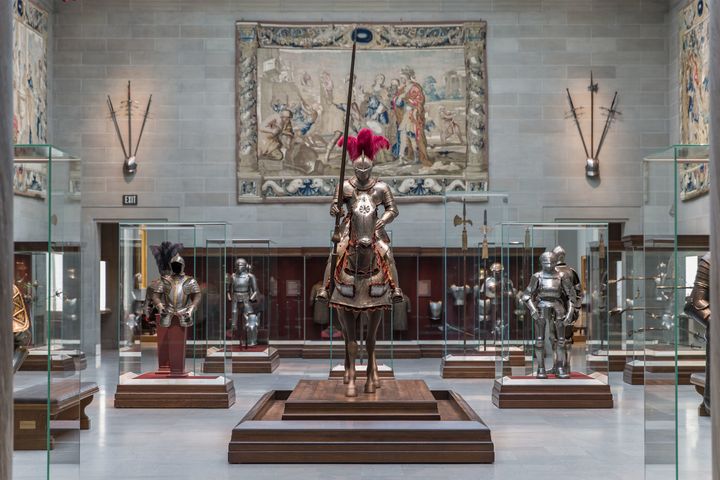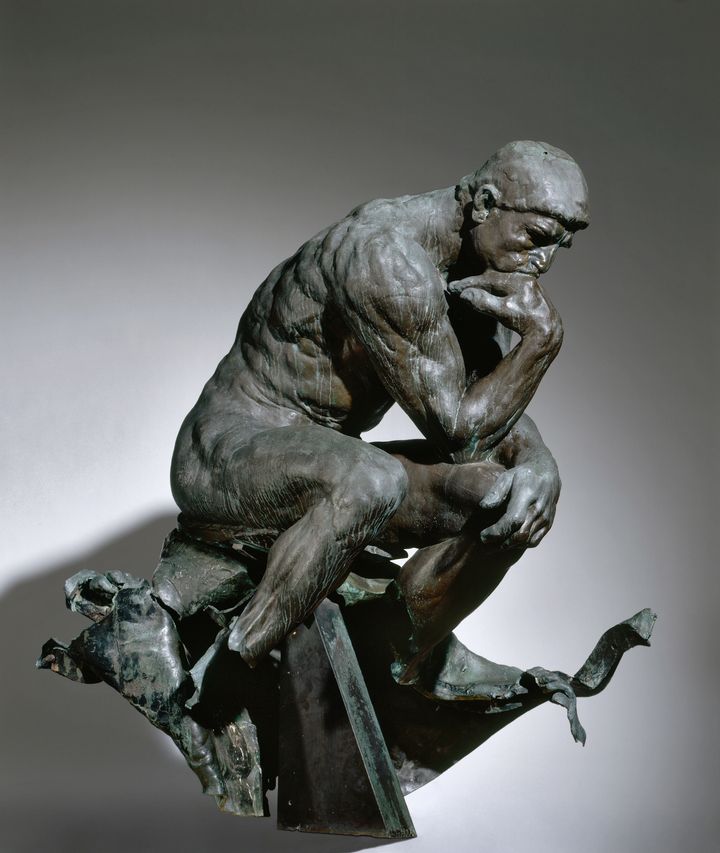By Paola K Amaras with Paul T. Kraly.

Art tells universally relevant stories precisely because they are the embodiment and expression of the human experience.” — Dr. William Griswold, Director of the Cleveland Museum of Art.
Embarking on its second century, after a spectacular year of centennial celebrations in 2016, the Cleveland Museum of Art, or CMA as everyone around here knows it, is thriving. This first article about the museum’s mission and initiatives concentrates on how this remarkable institution looms large in both Cleveland and the nation. Dr. William Griswold, the museum’s tenth director, discussed CMA’s present and future.
“It thrills me that we’re attracting more visitors and have over 30,000 family memberships,” he said, “Last fiscal year, we had over 700,000 visitors. I can’t wait until June 2017 to find out how many we had this past year, what with our centennial celebrations. We work with a lot of other museums in the area. The Rock and Roll Hall of Fame downtown gets more tourists, and we get more local visitors. I want to change that dynamic and attract not just our loyal locals, but visitors from surrounding states and the world. During the RNC, and also the Gay Games, we invited everyone to visit and tour our collections, take part in our events, and share their experiences. All the feedback we received was highly complimentary, and in many cases people were quite surprised at the breadth and depth of our collections and the programs.”
“For the Benefit of All the People Forever.”
This is what it says right on the banner in front of the 1916 building, behind one of the final August Rodin-supervised casts of The Thinker. Acquired in 1917, just after the museum opened to the public, the sculpture stood unharmed until 1970 when, during violent political statements against anything that seemed ‘establishment’, dynamite placed on the pedestal permanently damaged the base and legs of the sculpture. Instead of repairing it, the museum chose to leave the casting as it was, as a reflection of the political unrest and upheaval of the times. But like CMA, The Thinker is still standing, a testament to the enduring power of art . As reported in the Cleveland Plain Dealer (12/25/1892), Jeptha Wade deeded the land, “not as a gift for the City of Cleveland, but as a Christmas present to the people of Cleveland — an offering which will forever be a thing of beauty…” Wade’s gift of 3 3/4ths acres and the consolidation of a number of trusts and bequests under one aegis was the inception of the museum as it stands today. It is still one of the few museums of its size and scope that has free general admission to the public. Everyone is welcome to tour both the old and new galleries and exhibits of the museum, stay for a concert, film, or lecture, or partake in a wild, educational MIX at CMA party on the first Friday of every month.
Now, even as it has embraced its past, CMA’s focus is firmly set on the future, and its continuing role as a center for arts and culture in the region. Dr. Griswold arrived nearly three years ago, during the final stages of a $320 million renovation and expansion of the buildings and collections. He laughs, “When I came here, I kept my New York pied- a-terre, in case I needed it. Two months later, I realized I loved Cleveland and gladly gave up the apartment. I even want to retire here — there are great restaurants, great theatre, the Cleveland Orchestra, and of course, the museums, especially this one. I love the idea that this is a people’s museum, that the community supports us fully, from our exhibits, to our annual Solstice event, Parade the Circle and the Chalk Festival. We have so much more planned to engage everyone and to attract visitors.”
The museum’s renovation and re-purposing of its existing footprint was completed to ensure there was a sense of community excitement as the new structure unfolded. Now completed, an old, rarely-used courtyard has become a soaring, lighted atrium that hosts monthly MIX parties revolving around a theme based on the museum’s extensive collections, and is a popular site for weddings, along with the annual Solstice celebrations and other community-focused events. Provenance, an award-winning 76-seat restaurant replaced a tired cafeteria, and sliding glass doorways and a mezzanine lead to galleries and special exhibit spaces where visitors can experience the magic and beauty of art. The gift shop located near the entrance caters to all ages and income levels and always has something for everyone.
“We want everyone in our community, in our region and visitors to realize that they are welcome here. Our museum isn’t a warehouse of stagnant art or someplace standoffish and scary. It’s an open inviting environment and we want to expand even more into the community. We’re the people’s museum, and we aim to increase our reach into our community and beyond. Art is essential to people’s lives, and it’s our purpose — and pleasure — to afford Cleveland and our nation access to some of the finest collections in the world.”
Dr. Griswold and his staff — about 400 of the most passionate people around — are implementing a number of initiatives to expand the reach of the museum: Art, Place, Program and People.
Art
CMA boasts an amazing collection and is distinguished simultaneously as boutique as well as world class. Its Asian collection is considered one of the finest in the world, and there are other exceptional works and exhibits that are “essential to ensure broad and diverse physical, intellectual, and emotional experiences to all visitors” according to Dr. Griswold. CMA is also about scope and variety, from Apollo Saurokontos, an original by Praxitales, to a special exhibit by Jean-Michel Basquiat, a Brooklyn-born artist whose numerous notebooks display poetry, wordplay, sketches, and personal observations ranging from street life and popular culture to themes of race, class, and world history.
My own life has intertwined with the museum’s magnificent art from the time I was young. When I was a very little girl, my mother had Thursday’s off. She’d pick me up from school, and we’d go down to CMA. She’d drop me off in the Armor Court, where I’d read stories to the horse and knight exhibit until I was bored, and then walk around memorizing the tapestries, the weaponry, and all the artwork. She’d pick me up and we’d go to tea at the cafeteria. To this day, I can give a half-hour lecture on weapons to anyone who visits, especially if I’ve had a drink or two at the museum’s monthly MIX event. The irony of this story is that when I focused on Medieval Studies as one of my majors at Ohio Wesleyan University, my mother was totally surprised. I remember just looking at her and saying, “What did you think would happen? I learned it all in the museum’s Armor Court!”

Installation photo of the Cleveland Museum of Art’s Armor Court. Photo by David Brichford, courtesy of the Cleveland Museum of Art.
“It is one of our goals to challenge the corrosive rhetoric that seems to affect so many people about art.” Dr. Griswold expressed, “Art belongs to everyone, and it’s a great source of sadness to me that there are members of our community — from the exurbs to the urban centers — that feel CMA doesn’t belong to them or speaks to their understanding of how art impacts their lives. We are in the process of providing tools — through programs, and integrating technology — to enable each person to experience something personal within the museum and its outlying buildings and galleries.”
In the next article, we will examine some of the programs — both in technology within the museum and at schools, and share the relevant stories that enables the Cleveland Museum of Art to fulfill its mission of being
“For the Benefit of All the People Forever.”

The Thinker Caption: bronze, Overall — h:182.90 w:98.40 d:142.20 cm (h:72 w:38 11/16 d:55 15/16 inches) Wt: 1,650 pounds — weighed by crane on 5/31/2006. Gift of Ralph King 1917.42
Article originally appeared in Thrive Global, May 12, 2017
Please visit http://www.clevelandart.org/
